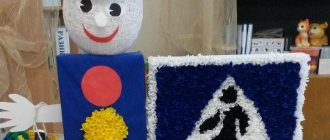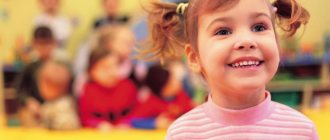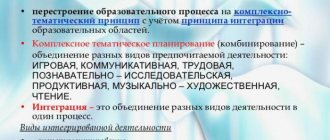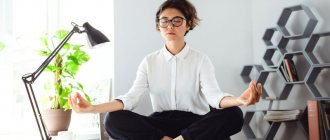Long-term planning for modeling and appliqué for December in the preparatory group
Badretdinova Venus
Long-term planning for modeling and appliqué for December in the preparatory group
December
Topic No. 11 (34)
.
Modeling "Bird"
.
T. S. Komarova “Art activities in kindergarten. School preparatory group ." Page 60.
Strengthen the ability to sculpt figurines based on folk toys from a whole piece of plasticine, conveying their character, using a variety of sculpting (pulling, pinching, smoothing, etc.)
.
Develop aesthetic perception. Plasticine, stacks, boards for modeling . Visual aid – a bird with a beautiful unfolded tail (Dymkovo product)
. Verbal: conversation, teacher’s story.
Visual: demonstration of visual aids.
Practical: completing the task. Looking at a picture of a bird with a beautiful unfolded tail. A conversation about the work of Dymkovo masters. Demonstration of the work done.
Topic No. 12 (36)
.
Modeling “Girl and boy dancing”
.
T. S. Komarova “Art activities in kindergarten. School preparatory group ." Page 63.
Improve children's ability to sculpt a human figure in motion. Strengthen the ability to convey the shape of body parts and proportions in sculpting. Develop the ability to act by agreeing on who will sculpt whom.
Illustrations depicting dancing children. Plasticine, stacks, modeling . Verbal: conversation, teacher’s story.
Visual: demonstration of visual aids. Practical: completing the task. Examination of toys, clarification of shapes and characteristic features. Demonstration of the work done.
Topic No. 13 (38)
.
Application “Cut out and stick your favorite toy”
.
T. S. Komarova “Art activities in kindergarten. School preparatory group ." Page 64.
Strengthen the ability to cut out and paste images of familiar objects, measure the size of the image with the size of the sheet, and beautifully arrange the image on the sheet. Cultivate taste when selecting paper of well-combined colors to create a composition. Improve hand coordination. Develop imagination and creativity. 5-6 toys, colored paper, scissors, glue, halves of album sheets. Verbal: conversation, teacher’s story.
Visual: demonstration of visual aids.
Practical: completing the task. Modeling . Demonstration of the work done.
Topic No. 14 (39)
.
Modeling "Santa Claus"
.
T. S. Komarova “Art activities in kindergarten. Preparatory group for school .”Page. 66.
Teach children to convey the image of Santa Claus in modeling . Strengthen the ability to sculpt hollow forms (Santa Claus's fur coat, convey details using various sculpting : pinching, pulling, smoothing the surface. Santa Claus toy, plasticine, stacks, modeling boards. Verbal : conversation, teacher's story.
Visual: demonstration of visual aids.
Practical: completing the task.
Examination of the toy Santa Claus, clarification of the shape and structure: details of clothing, attributes. Demonstration of the work done. Offer to read the fairy tale “The Frog Princess”
.
Topic No. 15 (43)
.
Application on the theme of the fairy tale “The Frog Princess”
.
T. S. Komarova “Art activities in kindergarten. School preparatory group ." Page 67.
Learn to think about the content of your work, reflect the impressions received while reading and looking at illustrations for fairy tales. Strengthen the skills of cutting out parts in various ways, create the need to complement the main image with details. Improve the ability to work with various materials: crayons, felt-tip pens, paints, pencils. Colored paper, glue, brushes, scissors, pencils, markers, paints. Visual material - cards with images of fairy tale characters. Verbal: conversation, teacher's story. Visual: demonstration of visual aids. Practical: completing the task. Reviewing safety precautions when working with scissors. Demonstration of the work done.
It should be remembered that the solution to the problems of the comprehensive education and development of children in the process of visual activity does not occur on its own, spontaneously, but on the condition that the teacher constantly remembers this and directs his activities towards solving them.
Considering the great importance of visual activities in the comprehensive education and development of children, it is very important not only to include all types of these activities (drawing, modeling, appliqué, fine arts) in the content of education, but also to ensure continuity of all stages of education.
By the end of training in the preparatory group, children should develop an aesthetic perception. They must see and understand the beauty of the surrounding life, works of fine and decorative art. Preschoolers should develop the ability to control their actions, achieve improvement in the image, evaluate and justify the assessment of their work and the work of other children in accordance with the task of the image; the ability to conceive interesting and varied content of one’s drawing, modeling and appliqué, to complement the image with details, achieving an expressive rendering of the image of objects and phenomena.
Children must master a variety of form-building movements that allow them to draw, sculpt and cut out various objects, to compose an image in parts and together (in a drawing - a continuous contour line, in sculpting - from a whole piece, in an appliqué - in silhouette).
Children should have a developed sense of color, the ability to create images and decorative compositions, solving them in different ways in color: multi-colored, in a certain color scheme. They must be able to use different visual materials and their combinations, various methods of drawing, sculpting, and appliqué; master accessible means of expressiveness (in drawing - lines of different characters, various strokes, color spots; in applique - cutting out in parts, silhouette; in sculpting - conveying proportions, poses, movements of figures).
Fine Arts Program
To form in children a sustainable interest in visual arts. Enrich sensory experience, include hand movements on the object in the process of familiarization with objects.
Continue to develop figurative aesthetic perception, figurative ideas, form aesthetic judgments; learn to evaluate their own work and the work of their peers in a reasoned and detailed manner, paying attention to the obligation of a friendly and respectful attitude towards the work of their comrades.
To form an aesthetic attitude towards objects and phenomena of the surrounding world, works of art, and artistic and creative activities.
Foster independence; develop the ability to actively and creatively apply previously learned methods of representation in drawing, modeling and appliqué, using expressive means.
Improve the ability to draw from life; develop analytical skills, the ability to compare objects with each other, highlight the features of each object. Improve the ability to depict objects, conveying their shape, size, structure, proportions, color, composition.
Continue to develop collective creativity. Cultivate a desire to act in concert, to agree on who will do what part of the work, how individual images will be combined into the overall picture.
Develop the ability to notice shortcomings in your work and correct them; make additions to achieve greater expressiveness of the created image.
Drawing
Subject drawing. Improve the ability to depict objects from memory and from life. Develop observation skills, the ability to notice the characteristic features of objects and convey them through drawing (shape, proportions, location on a sheet of paper).
Improve your imaging technique. Continue to develop freedom and at the same time accuracy of hand movements under visual control, their smoothness and rhythm.



